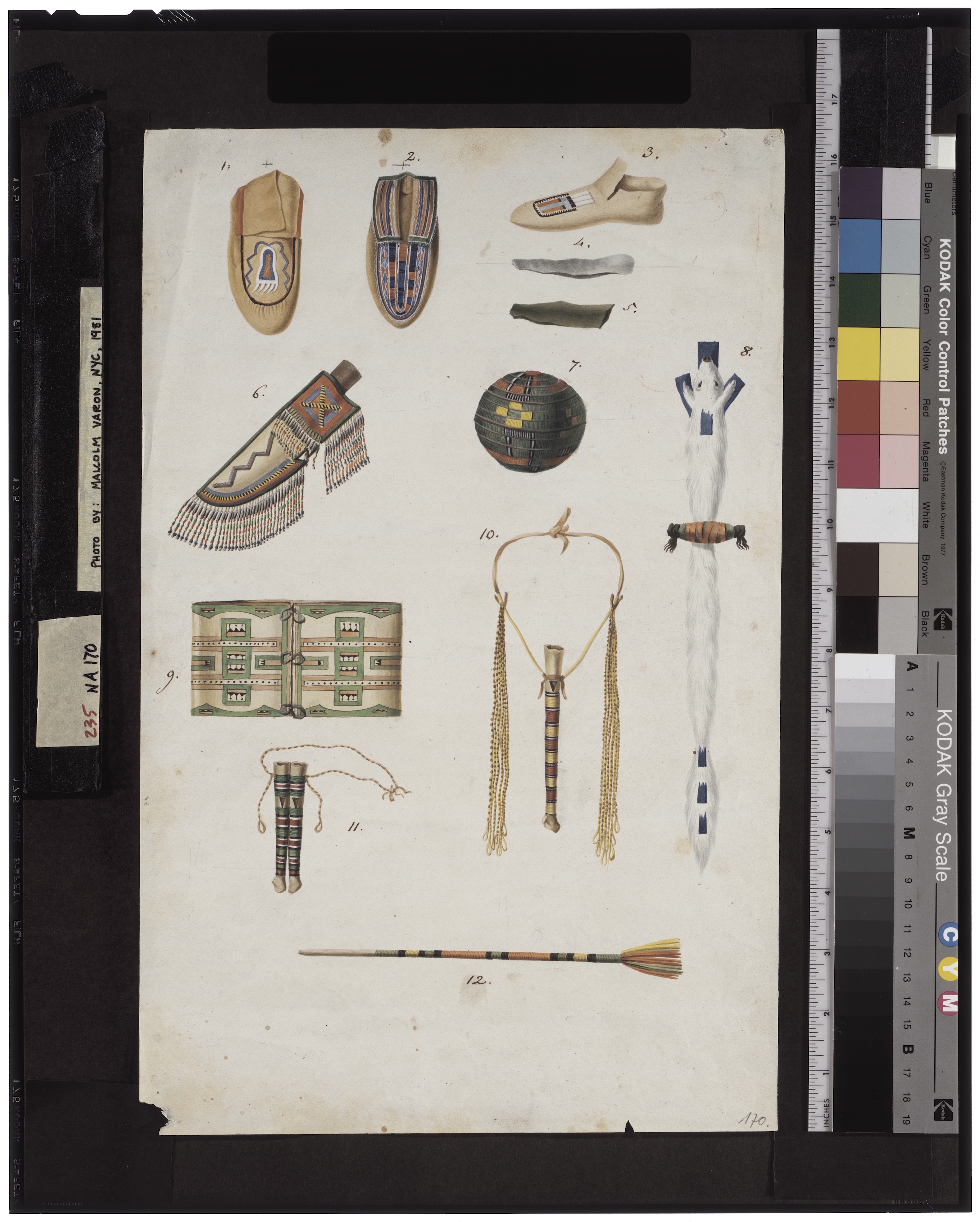Artifacts

Description
1-3. Moccasins. Number 1: Sioux. Number 2: Possibly Iroquois. See Plate 3 5 2 for additional views. Reproduced in Tableau 48 of the published aquatint atlas. 4- 5. Stone knives. Number 4: found at a site near New Harmony, Indiana. Number 5: Mexican, shown for comparison. See Plate 352 for additional views. Reproduced in Tableau 48 of the atlas. 6. Knife and knife sheath. Reproduced in Tableau 21. Sheath now in the Linden-Museum collection. 7. Ball, Mandan or Hidatsa. Quilled. See Plate 339 for a sketch and description of the women's game played with such balls. Reproduced in Tableau 48. 8. Skin pouch. Ermine. Reproduced in Tableau 21. 9. Rawhide storage container (parfleche). Painted. Maximilian refers to this parfleche as illustrative of Sioux hide pouches, but its design is more typically Cheyenne, suggesting that the piece was a trade item. Reproduced in Tableau 48. Now in the Museum für Völkerkunde collection. 10-11 . War whistles, Mandan. Bird bone whistles were common among Plains tribes and appear in several of Bodmer's portraits. See Plate 328 for an example. Number 10 was reproduced in Tableau 21. It is now in the Linden-Museum collection, attributed to the Mandan chief Mató-Tópe. Number 11, which was reproduced in Tableau 48, may be the double goose bone whistle that was part of the insignia of the Mandan Crow-Raven Society. 12. Pipe tamper, Assiniboin. Decorated with porcupine and bird quills. Tassel probably made of horsehair. Used to clean and tamp pipes and also worn in the hair as an ornament. Reproduced in Tableau 48.
Medium
watercolor and ink on paper
Dimensions
16 1/2 x 10 5/8
Call No.
JAM.1986.49.310
Approximate Date of Creation
1834


